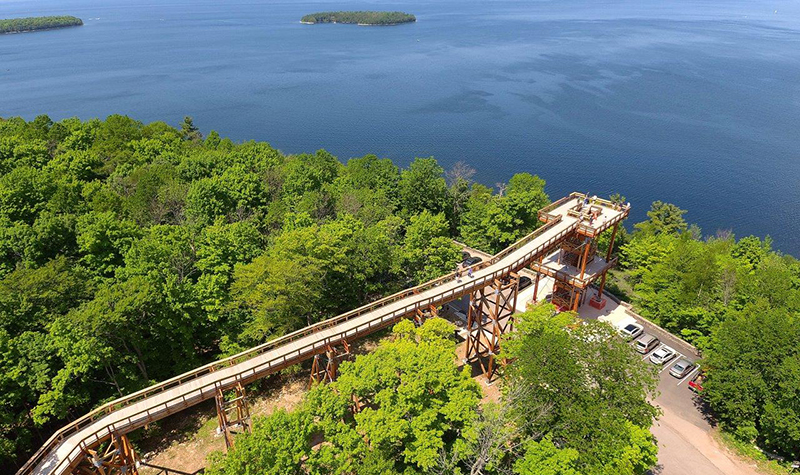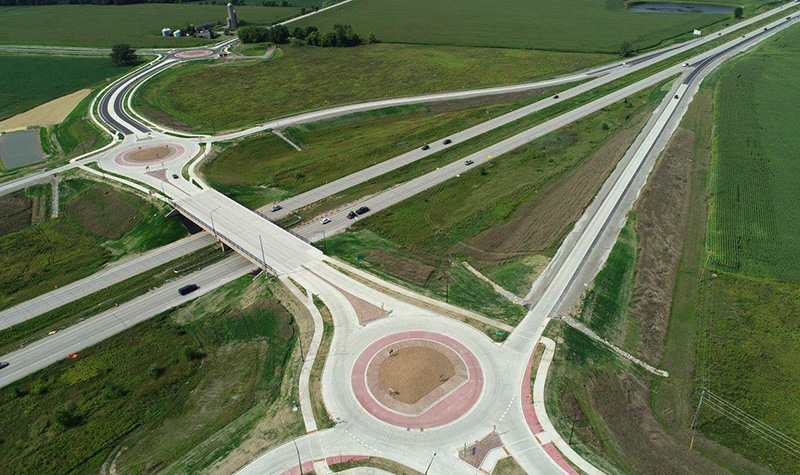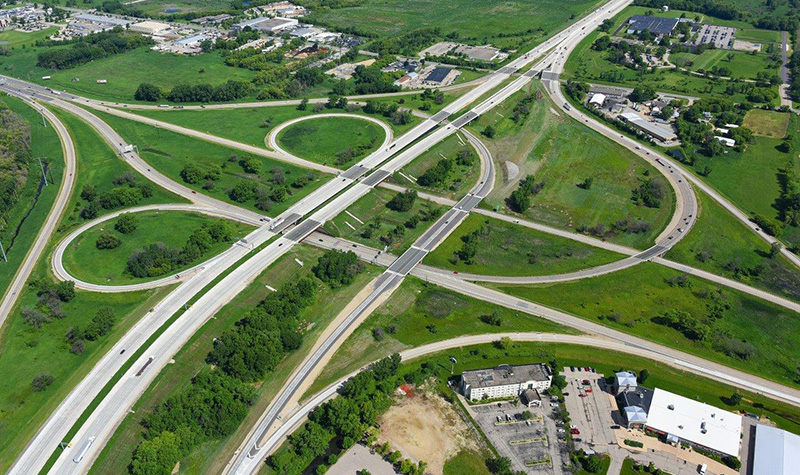Ayres Wins Three 2023 ACEC WI Engineering Excellence Awards
Ayres has been honored with three 2023 Engineering Excellence Awards from the American Council of Engineering Companies of Wisconsin.
Eagle Tower Project Resurrects Icon in Feat of Accessibility
 In 2016 when the former Eagle Tower was removed, many mourned its loss and wondered if a new one could be built. The Wisconsin Department of Natural Resources retained Ayres in 2017 to develop conceptual planning alternatives and eventually final designs for the new Eagle Tower at Peninsula State Park in Door County, where the tower is a prime attraction for the park’s estimated 1 million annual visitors. The new tower is remarkable for its accessibility, and it won an ACEC of Wisconsin Best of State Award.
In 2016 when the former Eagle Tower was removed, many mourned its loss and wondered if a new one could be built. The Wisconsin Department of Natural Resources retained Ayres in 2017 to develop conceptual planning alternatives and eventually final designs for the new Eagle Tower at Peninsula State Park in Door County, where the tower is a prime attraction for the park’s estimated 1 million annual visitors. The new tower is remarkable for its accessibility, and it won an ACEC of Wisconsin Best of State Award.
The Americans with Disabilities Act had a huge impact on old structures like Eagle Tower. It meant that minimum accessibility standards now had to be followed on all new publicly built structures. With the new standards in mind, Ayres worked with WDNR staff, local stakeholders, and the U.S. Forest Products Laboratory to develop design options for a new tower on the footprint of the previous one.
By using views from an unmanned aerial system (drone), the team was able to determine a tower height of 55 feet would afford visitors the types of views they got from the former tower, which stood 75 feet high. The 55-foot height allowed an impressive but practical ramp to be designed, allowing people of all abilities the chance to get to the top and see these views for the first time. The tower can now be navigated by a winding, 850-foot-long ramp or by the 95 stairs at the core of the tower. The ramp’s interpretive exhibits educate visitors as they rise through the forest canopy.
The project was completed in the spring of 2021.
New Highway 29 Interchange Connects Communities, Improves Safety
 Rising from farm fields west of Green Bay, a new diamond interchange along STH 29 brings much-needed safety improvements and business opportunities to the area. The project won an ACEC Wisconsin State Finalist Award.
Rising from farm fields west of Green Bay, a new diamond interchange along STH 29 brings much-needed safety improvements and business opportunities to the area. The project won an ACEC Wisconsin State Finalist Award.
Ayres led the design of the $24 million interchange, which replaced an at-grade crossing at CTH “VV” and creates a connection among several communities. The design team worked closely with Brown County, the Villages of Hobart and Howard, and the Oneida Nation on the Wisconsin Department of Transportation project, which required a major public involvement component.
Ayres helped Brown County secure federal funds to support an interchange with a new bridge crossing Highway 29, sidewalks, bicycle lanes, and roundabouts at the ramp terminals and nearby intersections. Pedestrians and cyclists now face much less danger when crossing Highway 29, and motorists have been given much safer access to local businesses, compared with the high-crash, at-grade intersection they used to navigate.
Construction began in 2021 and wrapped up in fall 2022.
IH 39/90 & USH 12/18 Interchange Built on Safety, Savings
 The reconstruction and reconfiguration of the IH 39/90 and USH 12/18 interchange was delivered on time and under budget, all the while keeping heavy traffic moving during construction, taking land use into consideration, and improving the critical movement of tourists and goods into and through Wisconsin.
The reconstruction and reconfiguration of the IH 39/90 and USH 12/18 interchange was delivered on time and under budget, all the while keeping heavy traffic moving during construction, taking land use into consideration, and improving the critical movement of tourists and goods into and through Wisconsin.
Ayres was part of the Dane Partners team that designed the project in Dane County, which won an ACEC Wisconsin State Finalist Award. Oneida Engineering Solutions, Short Elliot Hendrickson Inc, and EMCS partner with Ayres in Dane Partners.
It was initially intended that the project would fully reconstruct the interchange; however, in February 2017, WisDOT decided to revisit the scope of the system interchange. A new approach reduced project impacts, cut costs, and improved safety.
Dane Partners worked with WisDOT’s Southwest Region to successfully design and deliver plans for the $49 million reconstruction and reconfiguration project that would accommodate future traffic levels and ensure compatibility with the 45-mile IH 39/90 reconstruction project to the south.
A practice called performance-based practical design enabled an estimated $200 million in construction savings by using the remaining life of existing interchange infrastructure. These measures included an independent evaluation of the northbound and southbound roadways, which resulted in an alternative that provided much-needed additional capacity for southbound IH 39/90 by adding a third lane to the existing two lanes, while maintaining only two lanes in the northbound direction. This innovative hybrid capacity alternative was possible because the volume of traffic on the northbound IH 39/90 ramps to and from the Beltline was significantly higher than the volume traveling through the core of the interchange.
